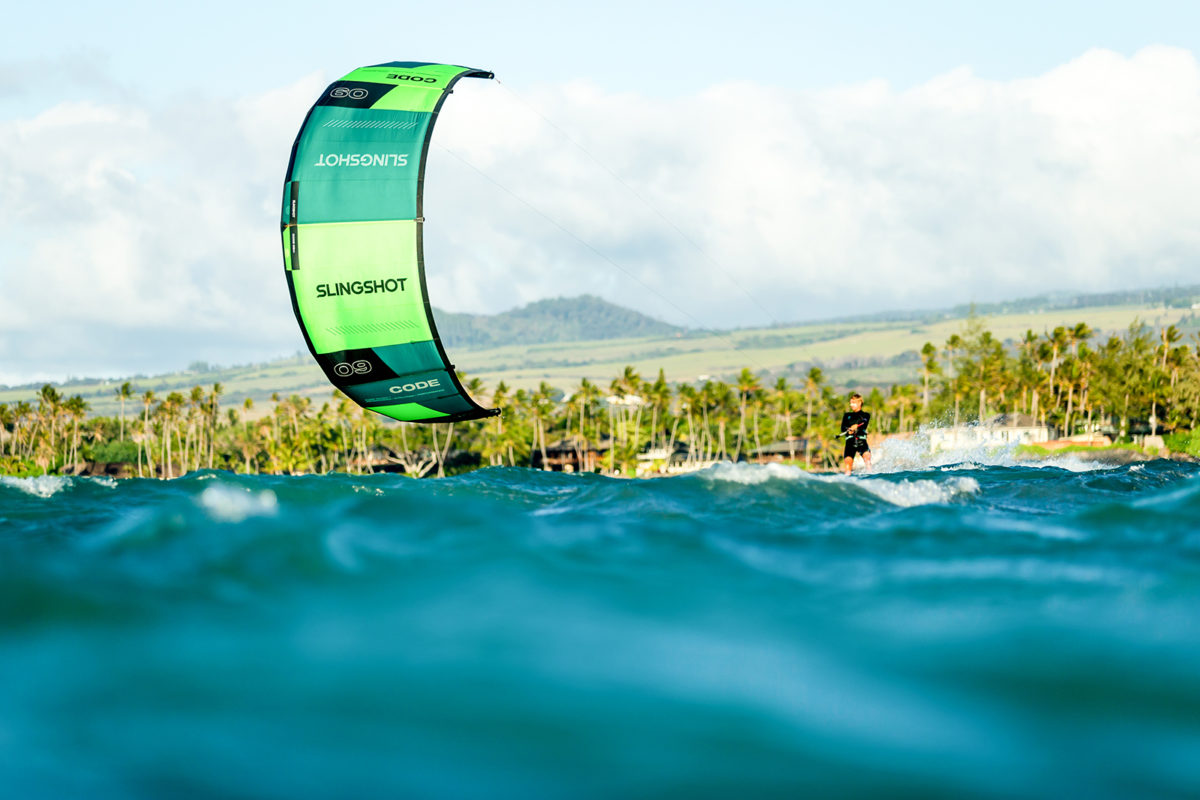Tell me about it: Slingshot Code V1
Slingshot have added a brand-new kite to their kite range, and it’s already taken Jeremy Burlando to first place at TatajubaFest, Brazil. We found out more about the winning formula…
When you purchase gear through links on our site, we may earn a small commission. Here’s why you can trust our tests and our affiliate partner.

Slingshot have added a brand-new kite to their kite range, and it’s already taken Jeremy Burlando to first place at TatajubaFest, Brazil. We found out more about the winning formula…
So an exciting new addition to your range! How does the Code fit into your line-up?
Yes! The Code is our new three-strut all-around kite that can take you from learning your first power strokes to sending your first kite loop. The Code was designed in partnership with our pro rider Jeremy Burlando. The design goal of the Code was to help kiters crack their progression and take their riding to the next level. The Code is intuitive, reactive and provides smooth and controlled power delivery, allowing the kiter to fully focus on riding and their progression.
Would a novice get on okay with it?
That’s the best part. The Code was designed for user progression at any level—not just for the Jeremy Burlandos of the kite world. This is a kite you can purchase as a complete novice and never outgrow it. Each time you go out on the Code it feels like the kite gets better as you do – it’s an incredible feeling.
What technical features make it a winning kite?
We were so excited to watch Jeremy take gold at the Big Air Kite League stop in Brazil and even more stoked he did it on the Code. Why we are so excited about this kite is that the same technical features that make the Code a Big Air winning kite also make it the best kite for learning and progressing your riding at any level. The medium aspect ratio combined with a Hybrid Open C shape provides reactive handling and great sheet-and-go performance. The three-strut platform is lighter and more maneuverable, and paired with the responsive wingtip design makes the Code the most reactive and intuitive kite in the Slingshot line.
What characteristics has it borrowed from your other kites?
The Code shares the same DNA as our 7m Machine but is a whole other animal. Lighter, nimbler, and with a lower aspect ratio, the Code is a breed of its own.
What manufacturing changes and materials have you implemented to keep weight down?
We can’t give away all our design secrets, but with our simplified canopy layup and new leading-edge material we are able to keep the Code light and nimble – without sacrificing any of our legendary durability.
You’ve chosen a pulley-less bridle for the Code. How does this affect its handling?
By eliminating pulleys, you feel a more instant and direct response from the kite. We also use ultra-thin and static bridle lines, which produce less drag and allows the kite to move quicker and more naturally.
Why did Jeremy choose to use the Code instead of the Machine at TatajubaFest?
Jeremy said “The Code has helped me to improve and land my tricks. It has the perfect bar pressure that lets me know where the kite sits at all times – if I am upside down while doing a board-off I will know exactly where the kite is. Also, its speed and lift make me 100% sure that the kite will catch me after every loop. I prefer the Code V1 for super technical Big Air tricks; the Machine will have more lift and hangtime but in terms of looping I prefer the Code V1.”
What else is new from Slingshot currently?
In August we released our 2023 range with cutting edge materials, modern graphics and a department team restructure. We have updated the SST, Machine and Machine LW kites, and updated most of our twintips including adding a brand-new Dream Rider to the range. Then we have two new surfboards, the Burner XR and Impact XR, alongside a second iteration of the Sci-Fly, designed by legendary shaper Al Emery and kitesurf icon Ben Wilson. On the foil side, we’ve updated our foil boards and have given pro rider Fred Hope free rein to design the perfect foil board, the high performance yet user-friendly Hope Craft V1. ■
You can get the latest goodness from the world of kiteboarding by subscribing to our print edition. You'll get 5 packed issues, plus a free tee and free digital access. And you'll be directly helping with our sustainability efforts too!
Check it out now